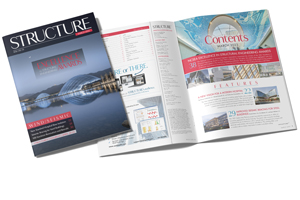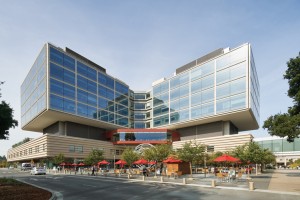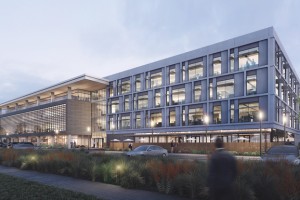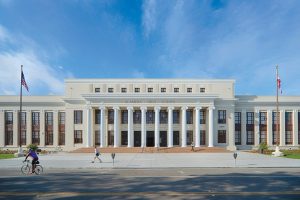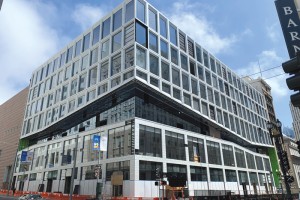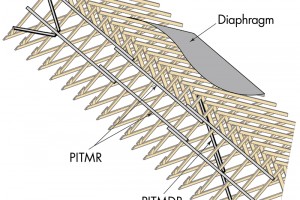Yearly Archives : 2022
The National Council of Structural Engineers Associations (NCSEA) is pleased to publish the 2021 Excellence in Structural Engineering Awards winners. The awards were announced during NCSEA’s 29th Structural Engineering Summit, held February 14-17, 2022, at the Hilton Midtown in New York City. A video of the presentation can be found on the NCSEA website. Given annually since 1998, each year the entries highlight work from the best and brightest in our profession.
…Seismic Excellence Through Base Isolation
The New Stanford Hospital (NSH), designed by Rafael Viñoly Architects, has replaced an existing aging facility with a modern base-isolated structure at the Stanford University Campus. The new seven-story state-of-the-art Level 1 trauma center includes 368 patient rooms, 20 operating suites, imaging and radiology suites, and an emergency department. Following the latest healthcare trend, the hospital was designed to be patient-centric, with patient rooms located around the perimeter of four towers. All rooms are private, with large floor-to-ceiling windows overlooking the surrounding campus and foothills.
…1951 Harbor Bay Parkway, a new building (Figure 1) located in Alameda, CA, was developed privately for use as commercial office space by a life-sciences company. The project provided the opportunity to utilize an innovative approach for seismic bracing that provides improved performance and cost-effectiveness over conventional braced-frame systems. The system uses concentric buckling-restrained braces (BRBs) in conjunction with a vertical mast or strong-back to reduce drift, eliminate weak stories, and increase redundancy. The yielding BRBs work in tandem with an elastic mast frame to create controlled rocking behavior that provides more resiliency and improved protection for the building frame, cladding, and interior construction.
…Part 2: Preserving Historic Value, Providing Modern Seismic Safety
A California public school campus constructed in 1924, partially retro fitted in 1936, recognized as a historic place in 1977, vacated shortly after that in 1978, partially retrofitted again in 1989, shuttered in 2012, was brought back to life in 2018. For a brief history of the Historic Alameda High School campus and the state government regulations setting seismic safety standards for public school buildings in California, see Part 1 of this article series in the January 2022 issue of STRUCTURE.
…Converting an Introvert into an Extrovert
In 2016, Macy’s announced they were shuttering their Men’s Store in San Francisco’s Union Square, and Southern California-based developer Blatteis and Schnur partnered with Morgan Stanley with the intent of winning the development rights. Gensler signed on as the architect for the pursuit and, hopefully, the project, and the KPFF San Francisco office joined the team as both the civil and structural engineers. Although the structural work was initially viewed as renovation and a seismic retrofit, it soon became apparent that the intent would be a complete transformation. The Blatteis and Schnur/Morgan Stanley team submitted the winning bid, Plant Construction joined the team, and the adventure began.
…For many in the structural engineering industry, when we hear of the SEI standards, we automatically think of the ASCE/SEI 7, Minimum Design Loads and Associated Criteria for Buildings and Other Structures, and that is where our knowledge stops. However, the Codes and Standards Activities Division (CSAD) of SEI is responsible for developing and updating twenty-five standards.
…Continuing our series on automation, I sat down (virtually) in September 2021 with two more industry experts in digital design: Michael Bolduc, P.E., a Senior Project Manager at Simpson Gumpertz & Heger, and Dr. Kristopher Dane, Vice President and Director of Digital Design at Thornton Tomasetti. Both serve on the SEI Digital Design Committee. Below are highlights from our discussion.
…Part 5: Wood (Chapter 23)
This five-part series discusses significant structural changes to the 2021 International Building Code (IBC) by the International Code Council (ICC). Part 5 includes an overview of changes to Chapter 23 on wood. Only a portion of the total number of code changes to this chapter is discussed in this article. More information on the code changes can be found in the 2021 Significant Changes to the International Building Code, available from ICC (Figure 1).
…

